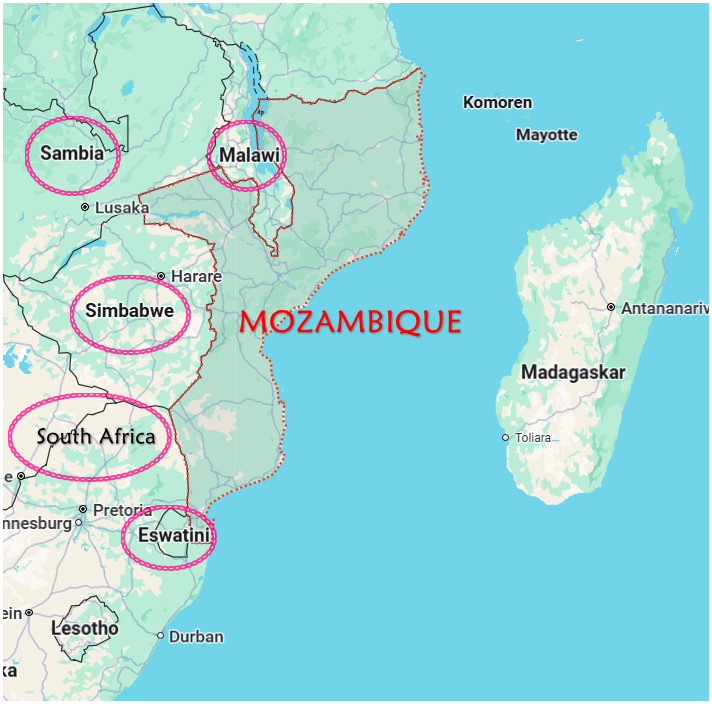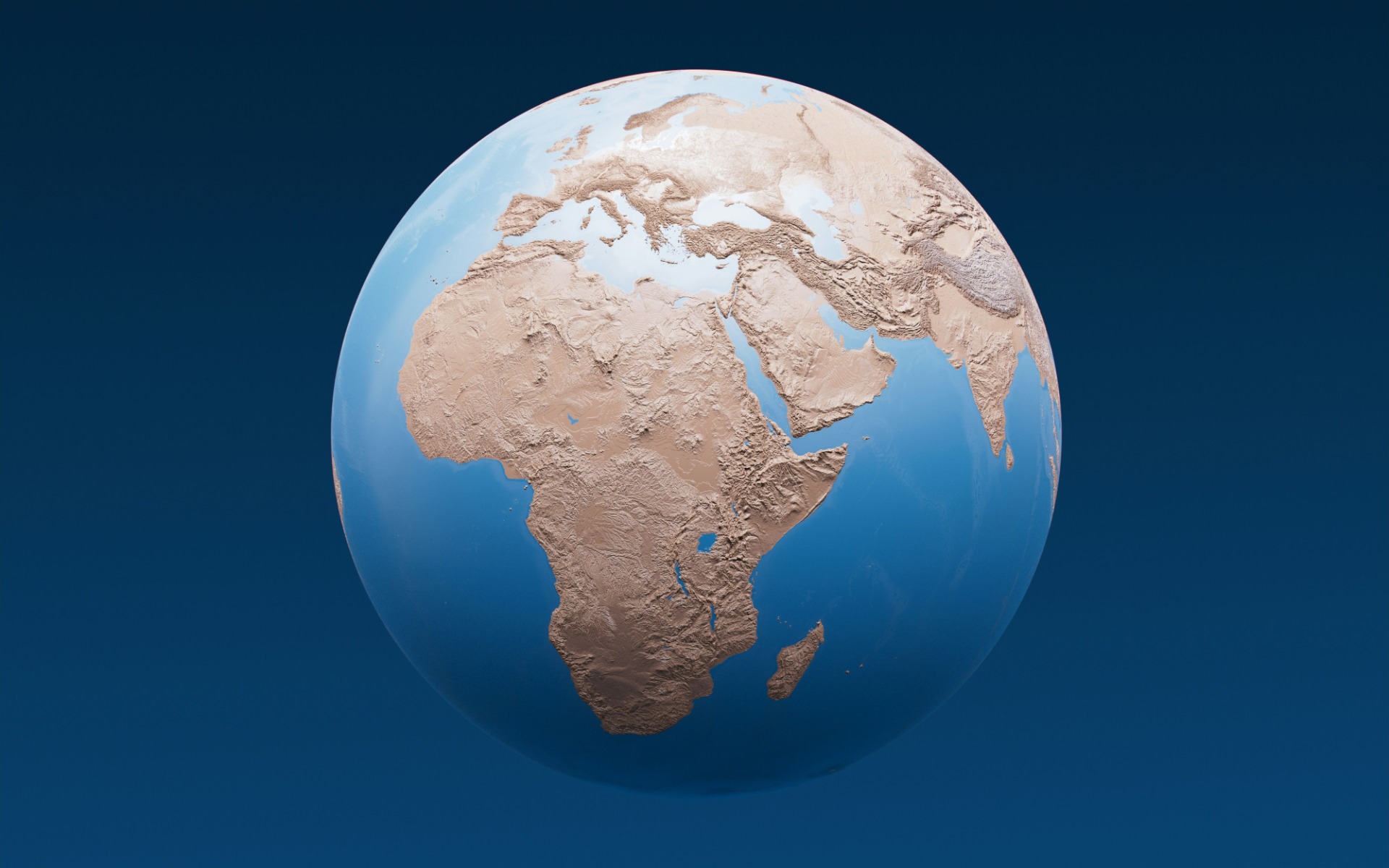Mozambique and SADC Cooperation
Mozambique and SADC Cooperation: A Regional Partnership for Stability and Growth
Mozambique's integration into the Southern African Development Community (SADC) has been a fundamental aspect of its economic, security, and political strategies since it joined the regional bloc in 1980. As one of the 16 member states, Mozambique leverages SADC's framework to address a variety of challenges, including insurgency, economic growth, and regional trade. This partnership not only provides avenues for Mozambique to tap into a broader market but also reinforces the collective goals of peace, stability, and integration across Southern Africa. In this article, we will explore Mozambique's cooperation with SADC, focusing on recent developments, economic ties, security initiatives, and the broader impact on its role as a regional trade gateway.

Geographical and Strategic Context
Mozambique boasts a 2,700-kilometer coastline along the Indian Ocean and shares borders with Tanzania, Malawi, Zambia, Zimbabwe, South Africa, and Eswatini. This positioning makes the country a critical trade hub for landlocked SADC members. The ports of Maputo, Beira, and Nacala play pivotal roles, handling around 40 million tons of cargo annually, with approximately 30% classified as transit goods for its neighbors. For instance, Malawi relies on Mozambique's port facilities for exporting tea and tobacco, while Zimbabwe transports tobacco and ferrochrome. South Africa also utilizes these ports for supplies of chrome and coal.
The Maputo Corridor connects South Africa's Gauteng region to Maputo Port, the Beira Corridor links Zimbabwe and Malawi to Beira, and the Nacala Corridor facilitates trade with Zambia and Malawi. Notably, these routes can reduce trade costs by 10-20% compared to other corridors, such as those leading to Dar es Salaam, underscoring Mozambique's value in regional logistics.
Historical Context of SADC-Mozambique Cooperation
The historical relationship between Mozambique and SADC is deeply rooted in both colonial and post-independence events. Mozambique's colonial history under Portuguese rule from 1505 to 1975 established early regional ties, with infrastructure projects like the Beira-Bulawayo railway constructed to serve British colonies in Zimbabwe and Malawi.
After gaining independence in 1975, Mozambique, under the leadership of FRELIMO, aligned itself with the Frontline States and subsequently SADC to counter the influence of apartheid South Africa. The nation's support for liberation movements in Zimbabwe and South Africa led to strained relations with Pretoria, particularly as it backed RENAMO during the civil war from 1977 to 1992. The war devastated much of the country's infrastructure and disrupted vital trade routes.
SADC's precursor organization, the Southern African Development Coordination Conference (SADCC), aimed to promote economic liberation. Mozambique's reconstruction after the civil war relied on such regional cooperation to secure donor funding and restore critical infrastructure, including the Sena Line, with investments reaching up to $500 million.
Post-1992, Mozambique began to stabilize its relationships within the region, particularly after South Africa's transition to democracy in 1994, which normalized diplomatic ties and transformed South Africa into Mozambique's largest trading partner by 2000.
Economic Cooperation
One of SADC's most significant initiatives is the establishment of a Free Trade Area (FTA), launched in 2008, which eliminated tariffs on 85% of intra-regional trade. This framework has propelled Mozambique's ability to expand its exports in key sectors, including aluminum from the Mozal smelter, electricity from the Cahora Bassa dam, and agricultural products such as cotton, sugar, and tobacco. In practical terms, South Africa absorbs a substantial 40% of Mozambique's exports, while Zimbabwe and Malawi heavily utilize Beira and Nacala ports, accounting for 32% and 7% of their cargo, respectively.
The Maputo Corridor is particularly efficient, handling around 30 million tons of freight annually, with strong backing from international firms such as Grindrod and DP World, through the Maputo Port Development Company. Recent investments of $165 million aim to enhance the corridor's container capacity to 530,000 TEUs. The Nacala Corridor, developed with Vale Moçambique's $1.7 billion railway project, exports 18 million tons of coal annually, benefiting both Zambia and Malawi. Meanwhile, the Beira Corridor, boosted by Essar Ports' coal terminal, supported Zimbabwe's mineral trade, managing 2.1 million tons of cargo in 2019.
To further enhance trade logistics, SADC has coordinated investments and resources, evidenced by the Southern Africa Trade and Connectivity Project, which received a $500 million endorsement from the World Bank in 2023 to support corridor improvements.
Investment and Development
Mozambique's engagement with SADC has opened doors to numerous cross-border investments. South African companies like Sasol and Eskom have contributed significantly to Mozambique's gas and energy sectors, while projects such as the Nkomazi Special Economic Zone near the Mozambique-South Africa border support agro-processing and logistics. ProSAVANA, another crucial initiative in the Nacala Corridor, integrates Mozambican and Malawian farmers into agribusiness, targeting substantial investment by 2030.
Recent developments in Mozambique's liquefied natural gas (LNG) projects, such as TotalEnergies' $20 billion investment, involve regional contractors from South Africa and Zambia, contributing thousands of jobs and showcasing the economic interlinkages fostered through SADC cooperation.
The SADC Regional Indicative Strategic Development Plan (2020–2030) emphasizes industrialization across member states, with Mozambique's rich natural resources in coal, gas, and aluminum attracting around $2 billion in foreign direct investment annually. This positions Mozambique as one of Africa's top FDI recipients, highlighting its strategic economic importance.
summary
In essence, Mozambique's cooperation with the Southern African Development Community not only enhances its own economic outlook but also contributes to regional stability and growth. The country serves as a critical trade gateway for neighboring nations, facilitating trade and economic integration across Southern Africa. Through historical ties, strategic investments, and collaborative initiatives, Mozambique's role in SADC underscores the importance of regional partnerships in achieving collective progress and resilience in the face of shared challenges. As Mozambique continues to embrace its position within SADC, ongoing investments and commitment to regional cooperation promise to unlock further economic potential for the nation and its partners.
